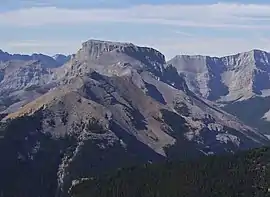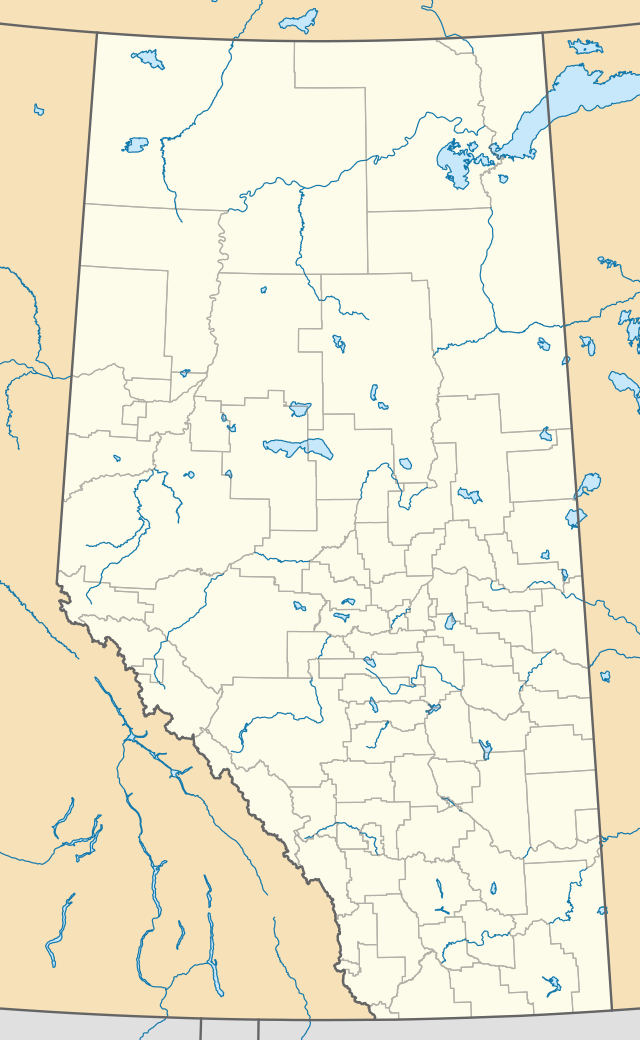Mount Remus
Mount Remus is a 2,688-metre (8,819-foot) mountain summit located in the Little Elbow River Valley of Kananaskis Country in the Canadian Rockies of Alberta, Canada.[2] The mountain is named for Remus, who along with his twin brother Romulus were the mythological founders of Ancient Rome. The name was officially adopted by the Geographical Names Board of Canada in 1940.[2] Mount Remus' nearest higher peak is Mount Romulus, 2.0 km (1.2 mi) to the west-southwest.[1]
| Mount Remus | |
|---|---|
 Mount Remus seen from Nihahi Ridge | |
| Highest point | |
| Elevation | 2,688 m (8,819 ft) [1] |
| Prominence | 341 m (1,119 ft) [1] |
| Parent peak | Mount Romulus (2832 m)[1] |
| Coordinates | 50°47′41″N 114°58′18″W [2] |
| Geography | |
 Mount Remus Location of Mount Remus in Alberta  Mount Remus Mount Remus (Canada) | |
| Location | Elbow-Sheep Wildland Park Alberta, Canada |
| Parent range | Fisher Range[1] Canadian Rockies |
| Topo map | NTS 82J/15[2] |
| Climbing | |
| Easiest route | Scrambling[3] |
Geology
Mount Remus is composed of sedimentary rock laid down during the Precambrian to Jurassic periods. Formed in shallow seas, this sedimentary rock was pushed east and over the top of younger rock during the Laramide orogeny.[4]
Climate
Based on the Köppen climate classification, Mount Remus is located in a subarctic climate with cold, snowy winters, and mild summers.[5] Temperatures can drop below −20 °C with wind chill factors below −30 °C. In terms of favorable weather, June through September are the best months to climb. Precipitation runoff from the mountain drains into the Little Elbow River, which is a tributary of the Elbow River.
References
- "Mount Remus". Bivouac.com. Retrieved 2019-03-25.
- "Mount Remus". Geographical Names Data Base. Natural Resources Canada. Retrieved 2019-03-25.
- Alan Kane (1999). "Mount Remus". Scrambles in the Canadian Rockies. Rocky Mountain Books. p. 151. ISBN 0-921102-67-4.
- Gadd, Ben (2008). "Geology of the Rocky Mountains and Columbias". Cite journal requires
|journal=(help) - Peel, M. C.; Finlayson, B. L.; McMahon, T. A. (2007). "Updated world map of the Köppen−Geiger climate classification". Hydrol. Earth Syst. Sci. 11: 1633–1644. ISSN 1027-5606.